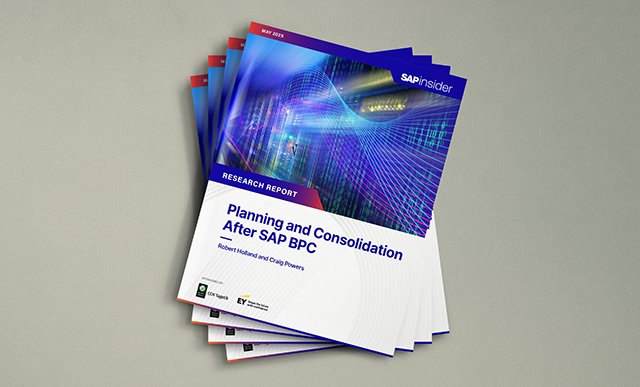Navigating the End of SAP BPC and Bolstering Planning Capabilities
Meet the Authors
SAP organizations are more reliant than ever on their finance teams to generate actionable, real-time insights that help them operate more efficiently. SAPinsider’s recent Tax Technology Innovation and Automation benchmark research report found that the demand for self-service reporting and analytics is an essential piece of most organizations’ financial innovation strategies – 86% of companies said this capability was at least somewhat important, making it one of the most commonly-cited responses.
Yet many companies are now looking for new options to help execute these essential planning functions, as SAP is set to sunset SAP Business Planning and Consolidation (BPC) by the end of 2027. Though this may be challenging for some organizations, it also presents an exciting opportunity for them to bolster their planning capabilities.
Planning for the Future
To help companies navigate the SAP BPC end of life, CCH Tagetik is hosting a webinar with SAPinsider on Thursday January 30. Attendees will learn methods to find the SAP BPC replacement solutions and strategies that align with their overall objectives and help them bolster their financial transformation strategies. They will also find out how they can utilize SAP S/4HANA to bolster vital financial workflows.
Explore related questions
As with any major change or transformation, companies should take their time to evaluate the potential tools and solutions that can meet their business needs. With 2027 rapidly approaching, SAP organizations would be wise to begin the evaluation process.
Financial Transformation Steps to Success
The experts at CCH Tagetik recommend that companies start by evaluating the current solution to find what aspects of it are essential and where there is room for improvement. This should be done by a trusted committee in concert with expert advisors who have experience with such digital transformations. Businesses can rely on the experience of these third parties to anticipate any pitfalls and build a planning roadmap.
Once companies understand their own challenges and opportunities, they can turn their attention to the vast marketplace to find the solution that best meets their needs and matches their budget. When it is identified, an organization can evaluate the technology and its customer service by trying out demos and speaking to other users.
Once the decision is made, the real work begins – implementation. Organizations will need to make technological implementation and train users to use the new solution. This involves significant testing and experimentation, ensuring that companies can hit the ground running once the solution is fully unfurled. Even once the solution is deployed, users should still test to ensure its success.
What This Means for SAPinsiders
Don’t go alone. Major digital transformations and implementations require significant financial and time investments from companies. While cost is always a major factor, organizations should not risk trying to plan and execute these projects themselves. Finding a trusted partner can save significant time and headaches down the road.
Be proactive. With SAP ECC and SAP BPC both facing 2027 end of maintenance deadlines, resources to perform major digital transformations will grow more and more scarce as the drop dead date draws nearer. Organizations will benefit from being proactive, rather than waiting for the last minute.
Experience matters. With a multitude of partners in the ecosystem, organizations should find those with direct and specific expertise that applies to their project. For instance, CCH Tagetik has a long history of helping SAP organizations with their financial planning and consolidation needs, so they are better prepared to guide users through an SAP BPC transition.






